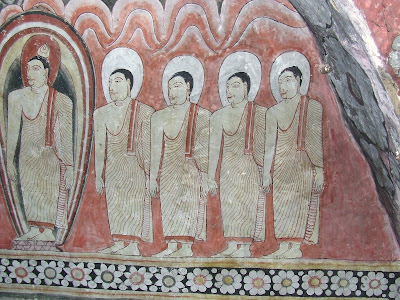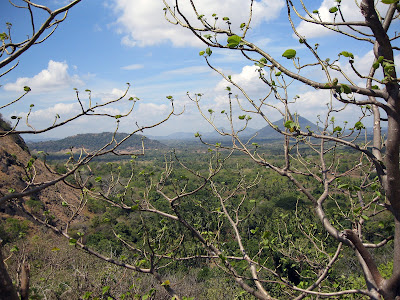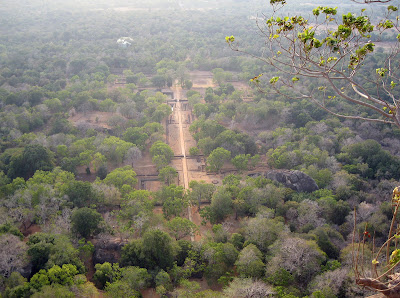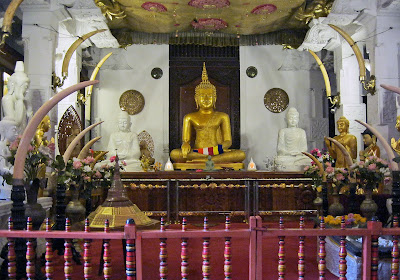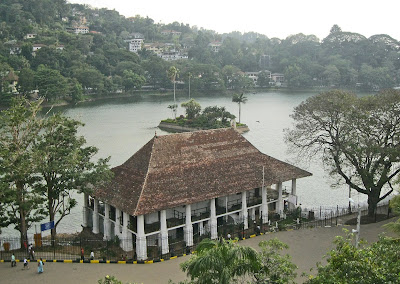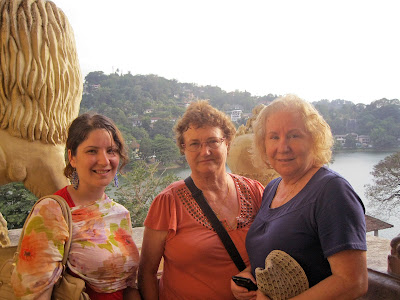We left
Olivia and Leona at the guesthouse having lunch before their drive to the International
airport at Katunayake and headed for Jaffna, approximately 270 km away. This distance took us 7 hours to
travel, including two rest stops, totaling little more than an hour.
This trek
north, into the area where Sri Lanka’s worst war ever was finished just over
three years ago, was quite emotional for us as it is where we went to live and
work after our marriage in Colombo in 1967. While Sam was at work as General
Manager of the Paranthan Chemical Corporation, I spent my time with a former
English missionary, Marjorie Baker, visiting kindergartens where I had fun
teaching the children English songs and games while she gave first aid and
other support to the women and children.
Another
place where I was regularly warmly welcomed was at an orphanage for girls at
Kilinnochchi. This orphanage, Karuna Nilyam, was managed by an elderly, inspirational
lady, Muriel Hutchins. Many of the girls at this orphanage were blind or
disabled in some way. Innocent and naive as I was four decades ago, I remember being horrified when Muriel explained to me that many actually
had parents in Colombo or Kandy but that they had sent their child as far away
as possible because they were intellectually or physically disabled, promising
to fund their upkeep, a promise that was soon forgotten. These parents were mostly Buddhists sending their defective, unwanted children to a Christian orphanage. As I read more about Buddhism I couldn't understand the actual practice of the religion here, with actions such as this, and others that I gradually learned about, appearing to be contrary to the fundamentals of the religion. Nothing new with this as it happens with every religion.
Other girls had been born as result of servant
girls being raped by their employers or employer’s sons and friends. All the girls were receiving a primary
education with a teacher being employed at the orphanage and they also learned
sewing and other skills deemed necessary for girls to have. I still have some
of the beautifully embroidered little dresses the blind girls stitched for my
eldest daughter who was born in Colombo.
Muriel Hutchins
had been an Anglican missionary who had decided not to return to England on her
retirement and had taken Sri Lankan citizenship. She was a friend of Rita Opie,
a New Zealander who had been a mentor to me prior to my marriage. How amazing that I would come to live so close to Rita's friend! Rita and her
sister had been missionaries working in schools in Colombo with Rita at Ladies
College, Kotte and her sister at the now prestigious Ladies’ College, Colombo.
We were also
frequent visitors to the boys’ orphanage down a dusty lane at Paranthan. The
boys here had similar problems to the girls. This orphanage was managed by
another ex missionary, Marjorie Baker and a Tamil couple. The boys here learned
farming skills and they not only provided all the vegetables for themselves but
also sold the surplus. They had cows, chickens, goats as well.
So, those
were some of our friends and familiar places during our time at Paranthan. We
knew that all of the people we knew had disappeared many years ago, some going to Australia, Canada and other countries but some never heard of again and that the
whole area had been altered forever by the war but that didn’t stop us from
hopefully trying to locate familiar landmarks. How silly that was!
These memories as well as many more were bouncing around in my head as we drove north alternately flying over the promised "carpet" and waiting in the rising dust at roadworks, sometimes for twenty minutes or more. I was surprised at the number of people and especially the number of women working in the atrocious conditions late into the night. I later heard that the President was visiting the area a few days later so that probably explains both the numbers of workers, the all night work and new grass turf being put down at the dusty edge of the road. I'd not seen that happen previously in Sri Lanka!
 |
| Women Road workers finishing work in the dusty dusk |
Arriving well after dark, we found our well named Cosy Guest house, had an excellent dinner at their well patronised restaurant and fell into bed.
Waking early next morning, we were able to see Jaffna city properly for the first time as we went in search of breakfast. The busy streets and lanes were familiar, seemingly untouched by war and I remembered that the Sri Lankan Army had, except for a couple of skirmishes, held Jaffna against the Tamil Tigers.
| Stringhopper breakfast at Rolex 'Hotel" Jaffna |
After breakfast at the Rolex Hotel - Sri Lankan restaurants are often called "hotels" - we walked down the road to stock up on snack food and fruit.
 |
| Buying Garlic |
Sam had been affected by the dust of the previous day and was otherwise unwell so in addition to the modern medicines I carry for any eventuality, he also wanted a dose of garlic. Buying it was part of the cure! [Unfortunately not, as things became worse for him.]
 |
| Shopping precinct |
It was good to walk along the street, doing a bit of shopping and a lot of chatting to shop owners and others. When we lived at Paranthan, I used to come most weeks on the train to shop, there being only one grocery shop at Paranthan so this felt normal.
 |
| Grocery shop, Jaffna |
Palmyra Jaggery, product of Jaffna, used to be highly valued so it was a thrill to see this in the shop. Only later did I learn that there are no palmyra trees there now, destroyed to minimise cover for combat, and that the jaggery I bought actually had been transported there from the south.
 |
| Palmyra Jaggery |
The next stop was the fruit shop where all the fruit seemed to have been imported. We got some beautiful mangoes though! So sweet and juicy!
 |
| Fruit shop |
We didn't need any vegetables but couldn't resist looking in on this small market where things were rather quiet.
 |
| Vegetable market, Jaffna |
It was still early and produce was being brought in - by the really useful tuk tuk,
 |
| Really useful tuk tuk |
 |
| Fashion Parade |
 | ||
| Jaffna |
 |
| Jaffna street clock |
I hadn't seen this clock before! Quite playful, but not any use. The time was 9am!
The streets and lanes were all busy with bikes and motorbikes, vans, police and army 4WD and other unexpected forms of transport. a surprise to me was the big number of women riding both bikes and motorbikes. I had noticed this new trend elsewhere in the country but the numbers here were far greater.
 |
| Transport option, Jaffna |
Breakfast, shopping and a little sightseeing done, we headed for the Jaffna Fort nearby . . .
















